2006 European Brass Band Championships - Own Choice Selections
25-Apr-20064BR has a look at the selections to be performed by the Championship Bands in the own choice section of the contest on the Saturday.
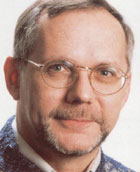 Music of the Spheres - Philip Sparke
Music of the Spheres - Philip Sparke
(To be played by two bands)
Music of the Spheres was written late 2003/early 2004 and reflects the composer's fascination with the origins of the universe and deep space in general.
The title comes from a theory, formulated by Pythagoras, that the cosmos was ruled by the same laws he had discovered that govern the ratios of note frequencies of the musical scale. (‘Harmonia' in Ancient Greek, which means scale or tuning rather than harmony – Greek music was monophonic). He also believed that these ratios corresponded to the distances of the six known planets from the sun and that the planets each produced a musical note which combined to weave a continuous heavenly melody (which, unfortunately, we humans cannot hear). In this work, these six notes form the basis of the sections MUSIC OF THE SPHERES and HARMONIA.
The pieces opens with a horn solo called t = 0, a name given by some scientists to the moment of the Big Bang when time and space were created, and this is followed by a depiction of the BIG BANG itself, as the entire universe bursts out from a single point.
A slower section follows called THE LONELY PLANET which is a meditation on the incredible and unlikely set of circumstances, which led to the creation of the Earth as a planet that can support life, and the constant search for other civilisations elsewhere in the universe.
ASTEROIDS AND SHOOTING STARS depicts both the benign and dangerous objects that are flying through space and which constantly threaten our planet, and the piece ends with THE UNKNOWN, leaving in question whether our continually expanding exploration of the universe will eventually lead to enlightenment or destruction.
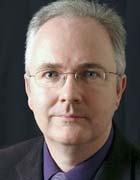 Journey to the Centre of the Earth - Peter Graham
Journey to the Centre of the Earth - Peter Graham
(To played by two bands)
The French novelist Jules Verne (1828 - 1905) created a unique blend of science and adventure in his series of novels known as "Voyages Extraordinaires". Written in 1864, Journey to the Centre of the Earth is on the surface an adventure story but as the commentator Diana Mitchell has observed on a deeper level can be seen as "man's journey of himself, always probing deeper for what lies at the centre".
The novel takes the form of a sequence of diary entries by Axel, nephew of Professor Otto Lidenbrock. The pair follow coded instructions in an old document guiding them to Iceland where, together with their guide Hans, they enter the open crater of an extinct volcano Snæfells and pursue a trail to the centre of the earth. There follows "hair-breadth escapes and ventures perilous" as the intrepid explorers encounter a vast interior world.
This music presents scenes from the novel in a rough chronological order. The work opens on the dark and brooding Summit of Snæfells and follows the adventurers as they descent into the bowels of the earth. En- route they encounter the Wonders of the Terrestrial Depths (an electrically illuminated sky), a dream sequence during which Axel witnesses a Battle of Antediluvian creatures before the final Ascent and Homecoming. The key scene of the book (and the music) reflects on Axel's despair as he becomes separated from the his companions and is Lost in the Labyrinth. His subsequent rescue is due to an acoustic phenomenon whereby he hears the voices of his friends in The Whispering Gallery.
Journey to the Centre of the Earth is dedicated to Ryan and Megan, who love the story!
Peter Graham
Cheshire
March 2005
Extreme Make-Over – Johan de Meij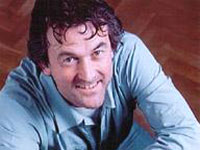
The piece is inspired by a number of musical references from the compositional output of the great Russian composer Tchaikovsky – most notably the Andante Cantabile (the second movement) of his String Quartet No 1 in D, Opus 11, which was written in 1871) – the one that brought tears to the eyes of Tolstoy when he heard it played in 1876.
Johan de Meij is an extremely intelligent and thoughtful composer of note, who has written many fine original compositions, symphonic transcriptions and arrangements of film scores and musicals. He has won a number of international prizes and is recognised both in his home country and abroad as a composer of distinction. ‘Extreme Makeover' reveals itself to be a work of at times inspired originality.
The piece itself is about 16 and a half minutes long and basically falls into a number of clearly defined sections. It is not however a theme and variations – not by any stretch of the imagination.
The composer writes:
The main theme of the Andante Cantabile is based on a Russian folksong. This theme is introduced in its original form by a brass quartet consisting of two cornets, horn and euphonium. At the theme's reprise, muted cornets sneak, almost inaudibly, alongside the four soloists and elongate each note of the melody, as though the sustaining pedal on a piano has been depressed. The first metamorphosis emanates from a single tone, to which the two successive tones from the theme are added in bell like chords. The addition of the lower second results in a completely new sound world.
Anticipating the canonic theme from the finale, a timpani solo formed the transition to the Alla Marcia. This movement is composed in a robust neo classical style and is peppered with quotes, including fragments from the Fourth and Sixth Symphonies and the Fantasy Overture Romeo and Juliet.
The following movement features ten tuned bottles played by members of the cornet section. This group provides the accompaniment for an extensive marimba solo, gradually producing a sort of gamelan effect. In composing for the tuned bottles, I have applied the ‘hoketus' technique: each player produces a single note of the melody or the chord. This fragile movement is joined seamlessly to the finale, a canonic treatment of the theme. Hurtling through each instrumental group, it leads us to a festive conclusion.
Johan de Meij
September 2004
Eden – Dr. John Pickard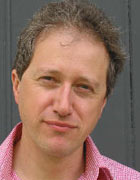
(To be played by two bands)
There is little doubt that ‘Eden' will become a landmark composition for the brass band movement. It is a work of immense musical intellect and originality, written with a breadth of scope that stretches far beyond what we have come to expect even of our most talented composers for brass in the last twenty-five years.
John Pickard has taken the art of brass band test piece composition not to a new, higher level, but to a totally new and exciting dimension. 'Eden' should be seen in the same light as ‘Contest Music' or ‘Cloudcatcher Fells' as a definitive work.
The composition has an umbilical link to the composers other output – most notably his huge ‘Gaia Symphony' for brass band. ‘Eden' develops the composer's personal thoughts and a belief about mans relationship to nature and creation. In ‘Gaia' he was drawn to the elemental forces of water, fire and stone and here he is drawn to Man's relationship with his creator and his ultimate nihilistic tendencies to reject it in favour of earthly pleasures.
‘Eden' is prefaced by the final lines of John Milton's ‘Paradise Lost'.
"…The world was all before them, where to choose
Their place of rest, and providence their guide:
They hand in hand with wandering steps and slow,
Through Eden took their solitary way."
God has created paradise itself, yet allows Man the innate ability of conscious choice to how he uses it. The result through rejection of Gods instruction is the acceptance of evil, which will eventually and irrevocably lead to his ultimate destruction.
The work itself is broken into three distinctive sections, and although two of them have a direct link to the subject matter of ‘Paradise Lost' it is not a musical interpretation of the poem. The final section deals with restoration and optimism, of rebirth and recreation through the composer's belief that even out of despair and near destruction a new rebirth of hope can begin.
The work has no direct religious connotations either, although it would be easy to compare the beautiful final section to Eric Ball's ‘Resurgum'. Milton was a Puritan, with very Puritan views, and although it is not clear whether the composers shares all his views, ‘Eden' like ‘Paradise Lost' is a very persuasive and intelligent metaphor for the modern way of life and how we live it.
Riffs and Interludes – Torstein Aagaard Nilsen
Riffs and Interludes was written in Autumn 1997 and was commissioned by the Stavanger Brass Band with support from Norsk Kulturråd for them to use at 1998 Norwegian Brass Band Championship. It was most recently used as the set work for the Norwegian Championships Elite Section in 2005.
It is an immensely satisfying and enjoyable work to listen to, incorporating elements from contemporary jazz to classic brass band repertoire and even heavy American prog rock. The composer himself states: "Riffs and Interludes is a book of memories from the time I was a band musician. It incorporates riffs, tunes and sounds which has influenced my own music-writing."
1. Alla funk - from Heaton to T.O.P.
The first movement is very rhythmic and energetic. The title gives an indication of the thematic musical content with clever fragmented quotes from Wilfred Heatons' Contest Music mixed with more powerful rhythmical funky patterns from the prog rock American Group The Tower of Power. It really does rock in places!
2. Songs from a singing Mountain» (Lento ma poco rubato)
The songs in this section are short and simple, sometimes only a few notes. The mountain meanwhile is massive and consists of strong chords whilst the composer leads you through a wonderful musical journey into the hills with the wafting sounds of a far off festival somehow always on the horizon, but always just tantalizingly out of reach.
3. Mechanical Dance Sequence (Vivace)
Episodes from the opening bars are repeated throughout in different variations and transpositions and a short but lively coda makes a brilliant conclusion.
The piece also uses extensive electronic interventions too with a ‘loop' of echoes that are ethereal in sound and quality and which link together the movements of the works. Although challenging to listen to at times, it is also a wonderfully transparent work of great musical intelligence.
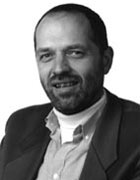 Earthquake - Jan de Haan
Earthquake - Jan de Haan
On average, about eight thousand (mostly light) earthquakes occur worldwide each day. The stronger earthquakes often take place in the earth's surface below the sea and in unpopulated regions. It is the heavy earthquakes in populated regions that draw most attention – because of the damage and the victims that are often involved.
Composer Jan de Haan has always been fascinated by this natural phenomenon. When he was commissioned to write the test piece for the championship section of the Dutch Brass Band Championships of 2005, for him this was at last the chance to take the earthquake phenomenon as a starting point for a composition.
While he was writing Earthquake, the composer had a South-American peninsula in mind, which he called ‘Isla Iberia'. This beautiful region, which in the past fell under Spanish rule, is surrounded by sea on three sides, and on the landward side divided by high mountains. Their vastness is reflected by the powerful first chords of the composition. The rhythmic pattern of these chords, regularly returns as a leitmotif, with which the dominant presence of the imposing mountain ridge Sierra Madrugada is illustrated.
After the introduction, which starts with a euphonium solo, the arduous trip through the mountains to the capital – in fact no more than a fishing village – can be heard. The fast passages and the frivolous themes that follow mirror the activity and the relatively carefree life of the local people.
However, the people are impressively made aware of the fact that although their peninsula may be beautiful, it is also a dangerous place: suddenly the earth moves for a moment – could this be a precursor to something their forefathers have experienced? After all the village was once destroyed by a heavy earthquake. Although things quickly quieten down, and everybody returns to going about their business, the atmosphere is less joyful than before after this warning from nature.
The scenic, diverse landscape of the peninsula comes forward in the slow middle movement. Yet the earth is still restless, and this, together with the knowledge of the dangers of living on a fault line, worries the people. The relatively simple buildings shake to their foundations. When the clock of the local monastery ‘Monasterio' tolls frighteningly, a heavy earthquake follows which wipes out just about every construction in the village that was so pastoral only a moment before.
When the earth has finally calmed down, the people are in shock. In a meditative movement, this is strikingly expressed by the euphonium. Overwhelmed by fear, conveyed by the many chromatic passages, the people flee in panic. Gradually, the powerful themes also start to echo determination. The people eventually find courage in their faith, presented by a chorale-like passage, after which they energetically start the reconstruction of their beloved homeland. And so the composition ends vigorously and full of steadfastness, reflecting the confidence of the industrious people of ‘Isla Iberia'.
When Jan de Haan was working on the closing movement of this composition, an unprecedented disaster occurred on 26 December 2004 in Asia and on the east coast of Africa. Due to the effects of an earthquake in the sea, hundreds of thousands of people died. The composer therefore dedicates the work to the memory of all the victims of this devastating tsunami.
The Promised Land - Kenneth Downie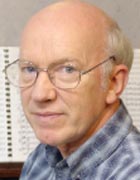
The story of Moses leading the Hebrews out of Egypt to find the Promised Land is one of the most dramatic to be found in the Bible, and the hymn tune Guide Me, O Thou Great Redeemer sets the narrative to music in a stirring fashion. Kenneth Downie's The Promised Land uses fragments of this hymn as the stimulus for a set of variants.
Most pieces employing this genre either set out by establishing the theme and then developing variations or begin with a fragment of the theme and deliver the entire source material as a finale. However, Downie begins with fragments of the hymn and symphonically develops them without ever hearing the tune in its entirety.
The work, although continuous is in seven main sections, and the mood of each section is implied by a sub-title based on the Biblical account of the journey to the Promised Land. In addition to John Hughes music, Downie also uses segments of Myfanwy by Joseph Parry to develop his variants.
I. Exodus - The music begins in a spirited and lively way full of optimism, with only the slightest hint of the trials and tribulations lying ahead. A declamatory euphonium cadenza leads into the second variant:
II. Dreams and Nightmares - exposing fragmentary and disturbing echoes of Parry's Celtic song. The unorthodox use of the song's melodic intervals puts the listener on edge. This section reminds us of the opposing elements the Israelites experienced on their long journey; fear of starvation and aspirations of Canaan.
III. Barren Land - Although the Israelites were free they were living and travelling through the desert. This short variant is atmospheric and is a stark contrast to
IV. Miracles and hell's Destruction - probably the most tempestuous variant, played at high tempo initially portraying some of the miracles God empowered Moses to act, and gradually building via rhythmic discourse to dramatic conflict. After the excitement subsides the golden section of the piece is revealed;
V. The Land of Milk and Honey - This variant epitomises love and everything that is good. Solos and love duets set an idyllic scene.
VI. Dawn of a New Age - is a reprise of the opening section, capturing all of the initial drive and enthusiasm but now the fragments of "Bread of Heaven" are even stronger giving it an air of triumph. After a theatrical statement from the tuba the music solemnly processes to the celebratory arrival in
VII. The Promised Land - the land to which every soul aspires to reach after negotiating the many challenges of life.















